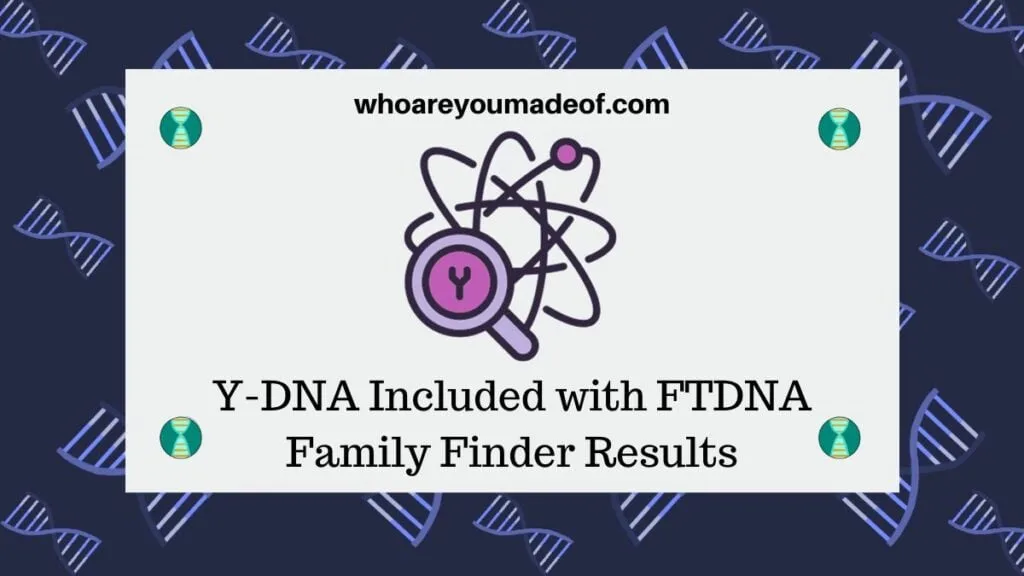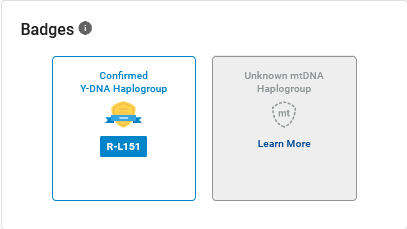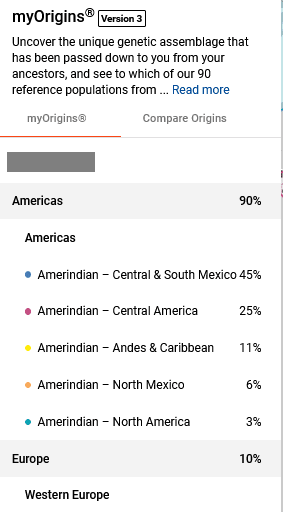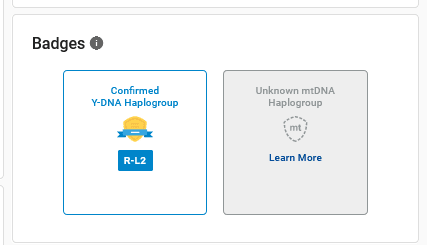Did you know that genetic males can now learn about their ancient direct-line paternal ancestry on their Family Tree DNA Family Finder results? In this post, find out how to see this information, and more.

The Y-DNA haplogroup is now included automatically when you take a new Family Tree DNA Family Finder test. However, if you previously took a test with FTDNA, your test results will automatically be updated to include your Y-DNA haplogroup.
Below, we'll dig more into how to find your haplogroup on Family Tree DNA, as well as:
- How they can know your haplogroup without you taking a new test
- Whether uploaded DNA kits will get haplogroup results
- What you can learn from these results
I'm pretty excited about this new feature, to be honest. I manage several kits for relatives, including one for an elderly great-uncle who passed away a few years after he did a test.
We had attempted further mtDNA and Y-DNA testing, but he was unable to get good swabs, unfortunately, and all of his tests failed. I've always been grateful that we were able to get his autosomal DNA tested.
Now, with these new results, I can see his Y-DNA haplogroup!
How to find your Y-DNA haplogroup on FTDNA
If you took a Family Finder test with Family Tree DNA, you can log in to your account to see if your results have been updated to include your Y-DNA haplogroup. You can find this information on your main dashboard page, located on the left side under the "Badges" heading.

You can also see your haplogroup results towards the top left of the main dashboard under "Y-DNA results and tools". This is where you can view where your haplogroup falls in the Y-DNA haplotree and view the general haplogroup report.

If you took a new test recently directly with Family Tree DNA, your haplogroup should be there immediately as soon as your results are ready. If your test was done more than a year ago, you should receive an e-mail from FTDNA letting you know that a new report is ready.
Even if you haven't received an e-mail, it's definitely worth checking to see if the badge is on your results.
Family Tree DNA has been releasing these updates in a "staggered rollout", with people who tested most recently receiving their updated results first. Based on what I can tell from receiving these updated results for the kits that I manage, they are in the second state of releasing results (people who tested between fall 2015 - March 2019).
The results will eventually be released for those who tested directly with FTDNA as far back as 2010.
Uploaded kits to Family Tree DNA to get Y-DNA haplogroup results
You might wonder if the kits that were uploaded to FTDNA will also receive a Y-DNA haplogroup. When I first learned about this feature, I wondered if the DNA file that we upload to the site contains enough information for the company to determine haplogroup results.
The answer is yes. There is enough data in the DNA files of those who did an autosomal transfer to Family Tree DNA to receive a Y-DNA haplogroup.
Updating autosomal transfers to receive Y-DNA results is the last stage of the staggered release of this feature, so those of us who transferred our DNA data to Family Tree DNA, or manage kits for those who have done so, will eventually be able to see this information.
As the saying goes, good things come to those who wait.
How can they get this information without a new DNA sample?
Most of the companies who do autosomal DNA testing automatically test locations in our genome, also known as SNPs, that provide a small amount of Y-DNA information. This information is enough to provide "predictive" Y-DNA results in most cases.
The predictive Y-DNA haplogroup is usually accurate.
Of course, if we want to learn more about our Y-DNA origins, males can take a Y-DNA specific test, such as the "Big-Y" test offered by FTDNA. This provides the most refined Y-DNA results commercially available, which includes a more detailed haplogroup and subclade.
As an aside, there are also plans to release mtDNA (mitochondrial DNA) haplogroup results for those who tested with Family Tree DNA because mtDNA data is also included in autosomal DNA data.
I will write more about this as more is known and results are released.
What can you learn from your FTDNA Y-DNA haplogroup?
The Y-DNA haplogroup can help you learn the origins of your direct-line paternal ancestors. Your direct-line paternal ancestors include your father, his father, his father's father, his father's father's father, and so on.
My husband's adoptive uncle, who also happens to be related to my husband as an estimated 2nd-3rd cousin on his DNA match list, had been wondering about his paternal origins. He was born in an indigenous village in Mexico and is a fluent Nahuatl speaker.


He is estimated to have 90% of his ancestry coming from Indigenous Americas regions, and only 10% from Europe. His paternal ancestors have no knowledge of being descended from Europeans, but his R-L2 haplogroup results indicate that his direct-line paternal ancestor was a European man.
So, your Y-DNA haplogroup can also help you know which continent your direct-line paternal ancestors were from.
The Y-DNA haplogroup can help provide a bit of evidence to confirm that two people are descended from the same paternal line. For example, my father's Y-DNA haplogroup on 23andMe is RL2; this matches the haplogroup is his paternal uncle on FTDNA.

Since both my father and his great-uncle took autosomal tests, we know that the haplogroup is "predicted", and has the potential to not be 100% accurate. However, since they both got the same result from different companies, it is confirmation that their assigned haplogroup is likely correct.
Conclusion
I hope that you have found this article interesting, and that you are inspired to check your Y-DNA results in order to see if they have been updated with a hpalogroup badge.
If you have any questions about something that you have read here, or if you would like to share why you are excited about seeing your Y-DNA haplogroup, I would love to hear from you in the discussion below.
Thanks for stopping by!
